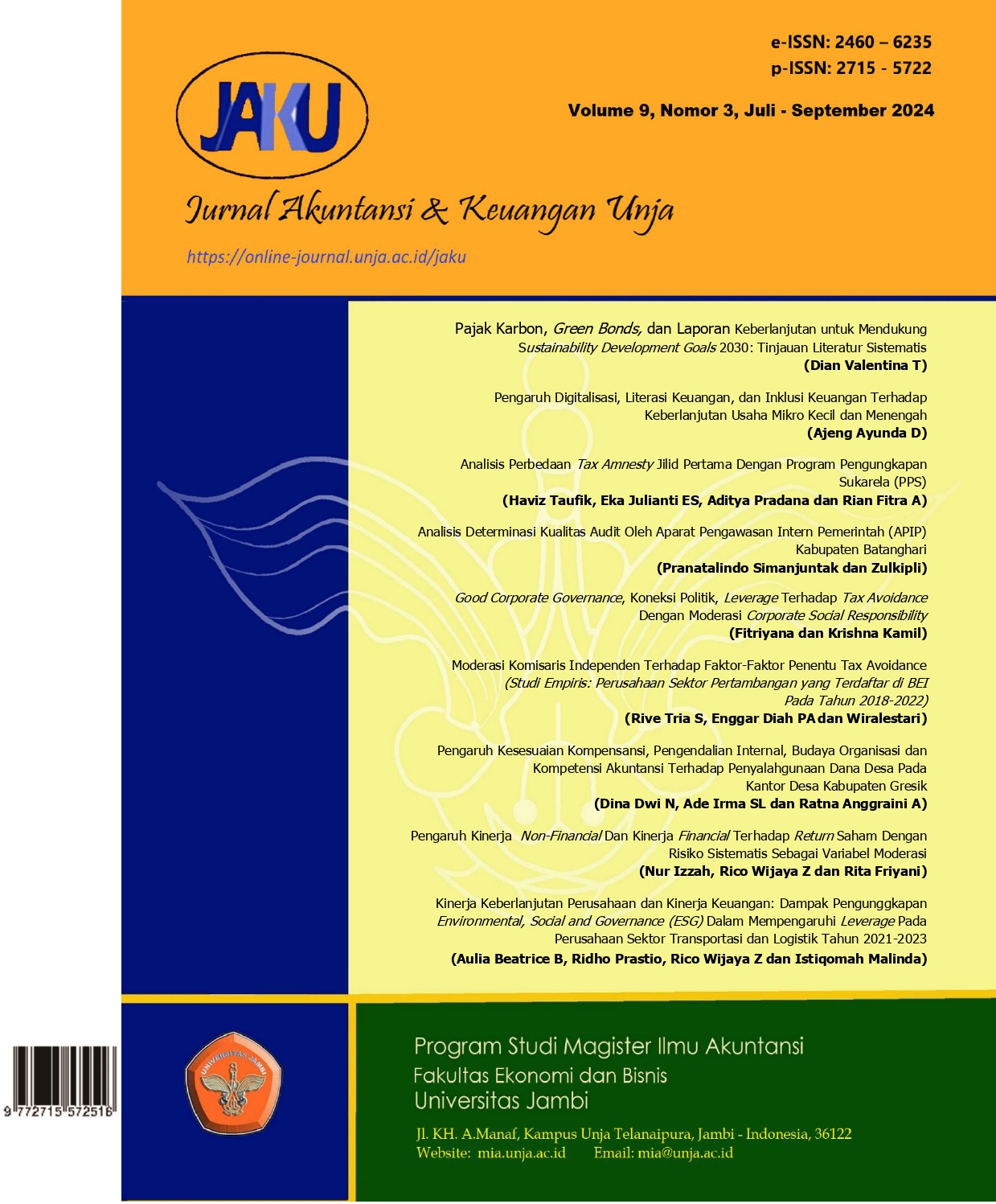Analysis of The Differences Between The First Volume of Tax Amnesty and The Voluntary Disclosure Program (VDP)
DOI:
https://doi.org/10.22437/jaku.v9i3.39964Keywords:
Tax Amnesty, Tax, Tax Amnesty Policy, Voluntary Disclosure ProgramAbstract
This research analyzes the differences between tax amnesty and the voluntary disclosure program (PPS). The research method focuses on descriptive qualitative research. Where the research results show that state revenue from PPS is more optimal and effective than tax amnesty. This was caused firstly, at the time of the implementation of the tax amnesty, Law No. 9 of 2017 concerning Stipulation of Government Regulations in Lieu of Law No. 1 of 2017 concerning Access to Financial Information for Tax Purposes had not yet been passed. This was certainly difficult for the Director General. taxes to gain access to taxpayer information from existing stakeholders so that the data obtained is limited and makes the implementation of the tax amnesty not optimal. Meanwhile, when the PPS Law was implemented, it made it easier for the Director General of Taxes to access information relating to taxpayers' tax obligations so that with more data, state revenues from PPS were also greater and maximized; Tax amnesty has a smaller tax rate compared to PPS and the size of the rate depends on which period the taxpayer wants to participate in. Meanwhile, PPS divides tax rates not based on period but based on policy I and policy II as well as the type of asset disclosure.
Downloads
References
Awaeh & Lambey. (2017). Analisis Efektivitas Penerapan Tax Amnesty (Pengampunan Pajak) Terhadap Penerimaan Pajak Pada Kantor Pelayanan Pajak Pratama Bitung. Jurnal Riset Ekonomi, Manajemen, Bisnis dan Akuntansi
Humas Sekretariat Kabinet. (2022). “Realisasi Tax Amnesty, Menkeu: Tebusan Rp130 Triliun, Deklarasi Rp4.813,4 Triliun, dan Repatriasi Rp146 Triliun”. (2023,February25). https://setkab.go.id/realisasi-tax-amnesty-menkeu-tebusan-rp130-triliun-deklarasi-rp4-8134-triliun-dan-repatriasi-rp146-triliun/
Permana. (2020). Efektivitas, Dampak, Dan Keberhasilan Tax Amnesty Di Indonesia. Jurnal Akuntansi dan Bisnis Krisnadwipayana.
Sukmadinata, Syaodih. (2017). Metode Penelitian Pendidikan Cetakan Dua Belas. Bandung: PT. Remaja Rosdakarya.
Sugiyono. (2019). Statistika untuk Penelitian. Bandung:Alfabeta.
Undang-Undang Republik Indonesia Nomor 28 Tahun 2007 Tentang Ketentuan Umum dan Tata Cara Perpajakan.
Undang-Undang Republik Indonesia Nomor 11 Tahun 2016 Tentang Pengampunan Pajak. .
Undang-Undang Republik Indonesia Nomor 7 Tahun 2021 Tentang Harmonisasi Peraturan Perpajakan.
Undang-Undang Republik Indonesia Nomor 16 Tahun 2009 Tentang Ketentuan Umum dan Tata Cara Perpajakan menjadi Undang-Undang. Jakarta.
Undang-Undang Republik Indonesia Nomor 9 Tahun 2017 Tentang Penetapan Peraturan Pemerintah Pengganti Undang-Undang No 1 Tahun 2017 tentang Akses Informasi Keuangan Untuk Kepentingan Perpajakan Menjadi Undang-Undang. Jakarta.
Uswatun, dkk. (2021). Analisis Perbandingan Tax Amnesty Jilid I dan Jilid II (Program Pengungkapan Sukarela) serta Peluang Keberhasilannya. Owner: Riset dan Jurnal Akuntansi..
W.D, Dicky. (2022). DJP: PPS Resmi Berakhir, Realisasi Penerimaan Meningkat Tajam. (2023, February 12): https://katadata.co.id/dicky/berita/62c3d4bedda7a/djp-pps-resmi-berakhir-realisasi-penerimaan-meningkat-tajam
Direktorat Jenderal Pajak: “PPS dalam Angka”. 2025, January 2. www.pajak.go.id/id/PPS
Downloads
Published
How to Cite
Issue
Section
License
Copyright (c) 2025 Haviz Taufik, Eka Julianti ES, Rian Fitra A, Aditya Pradana

This work is licensed under a Creative Commons Attribution 4.0 International License.


















